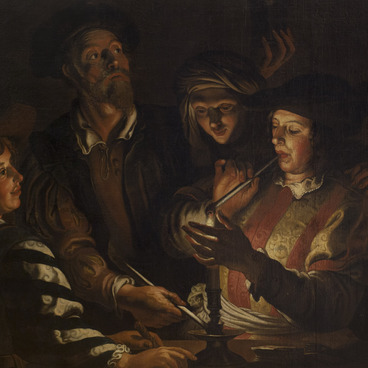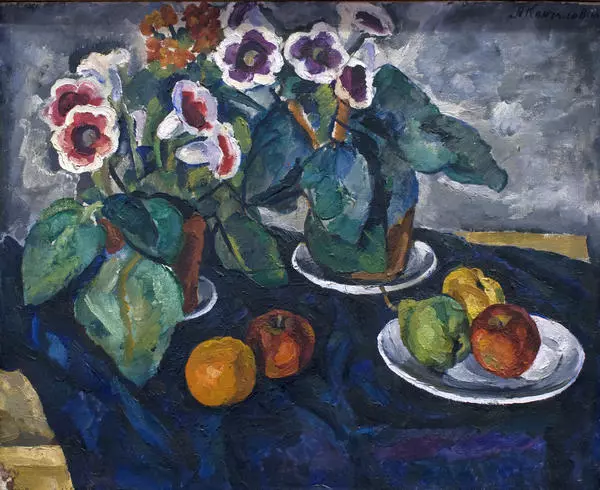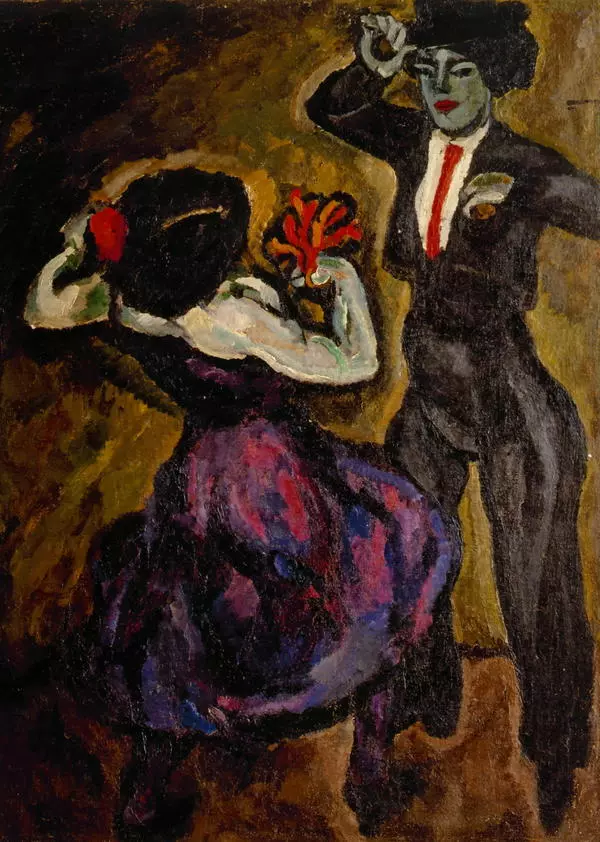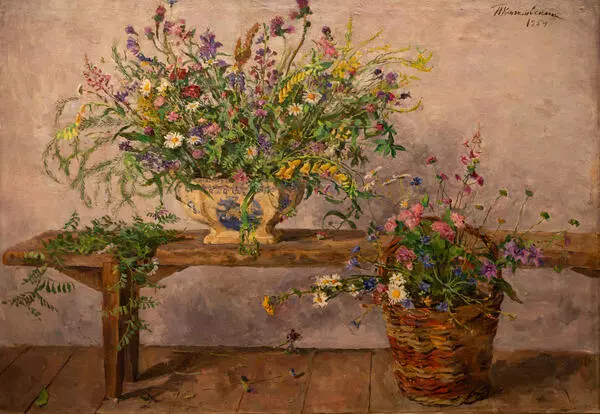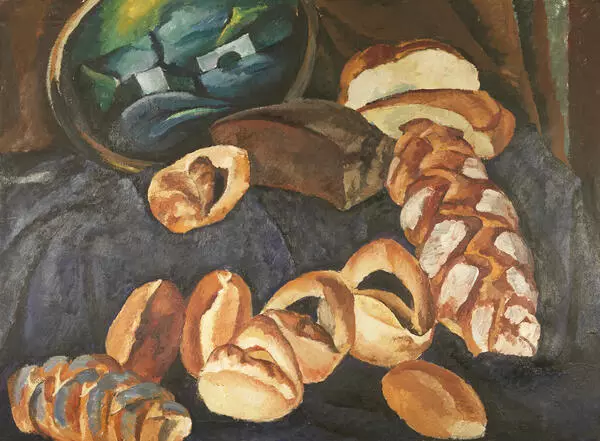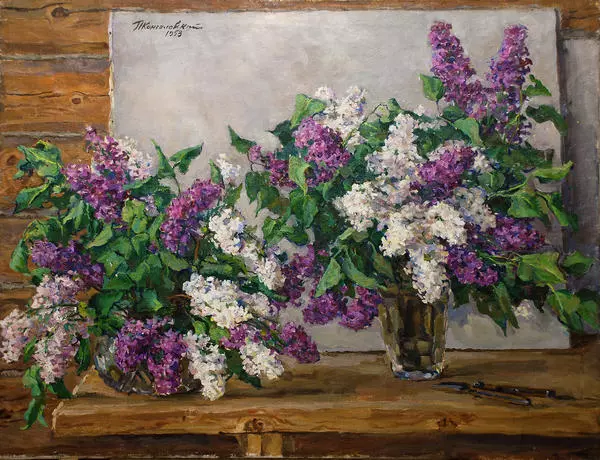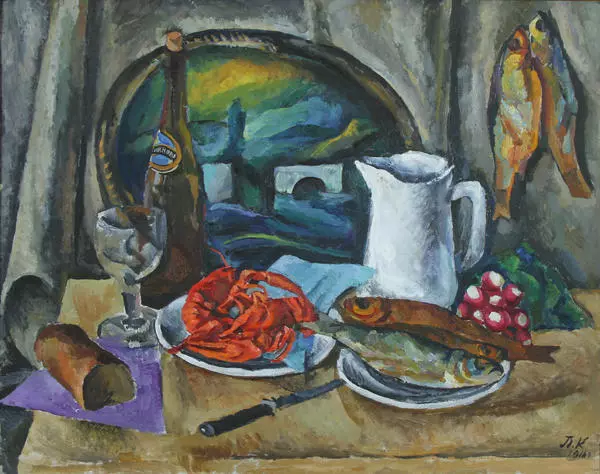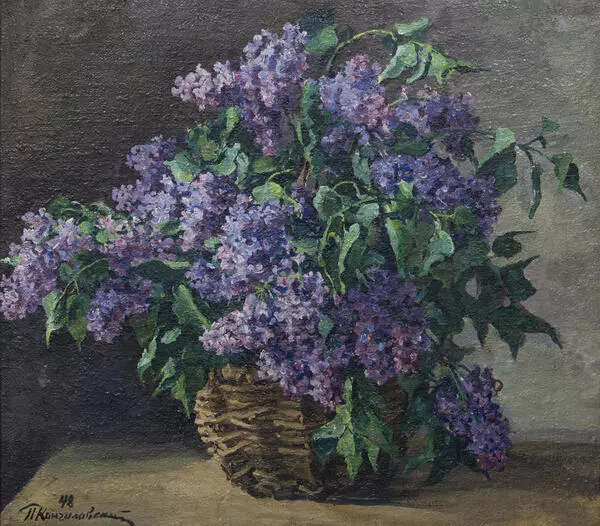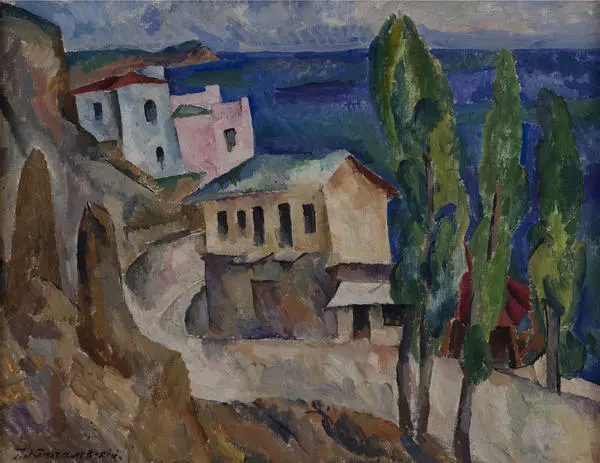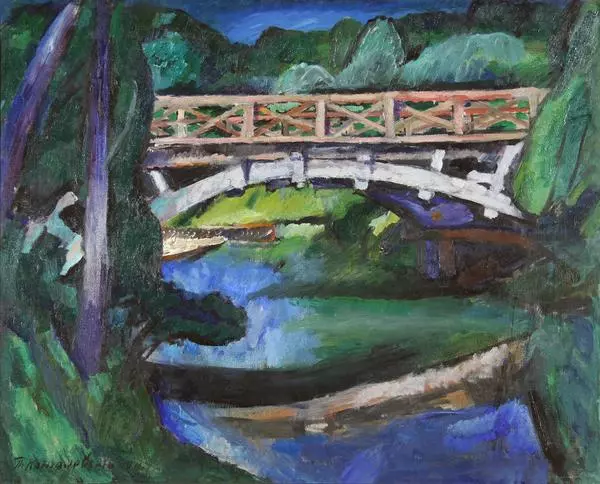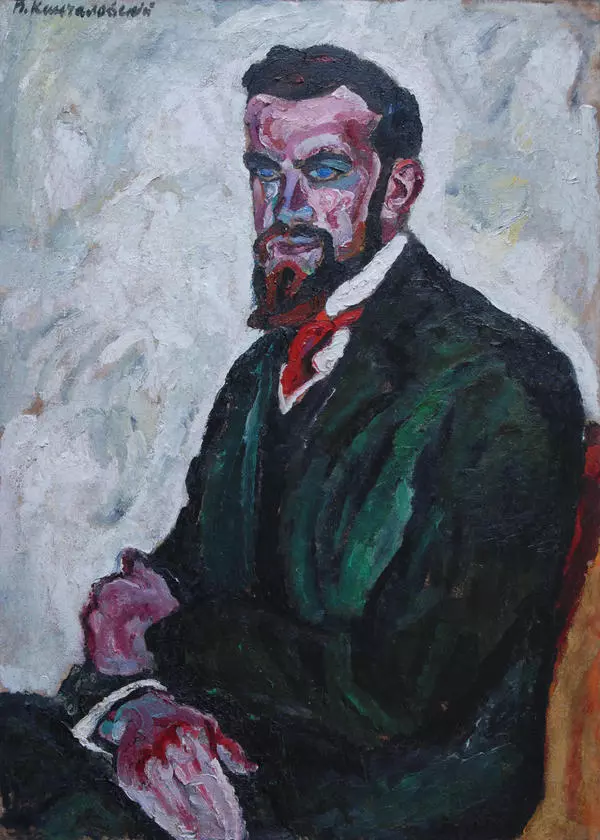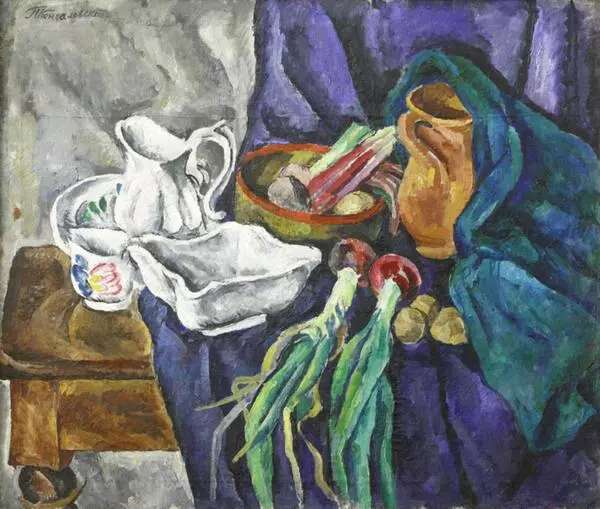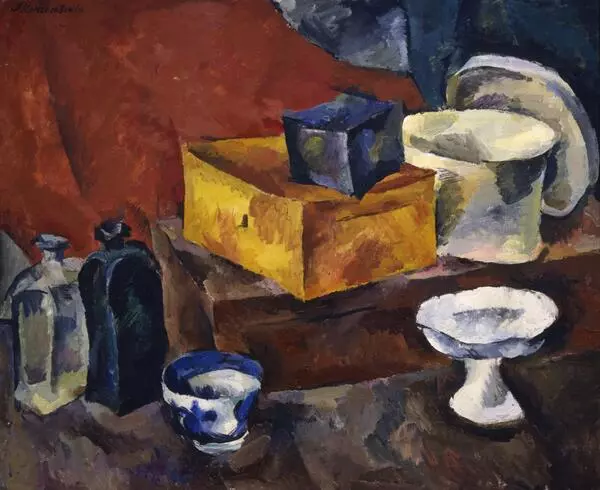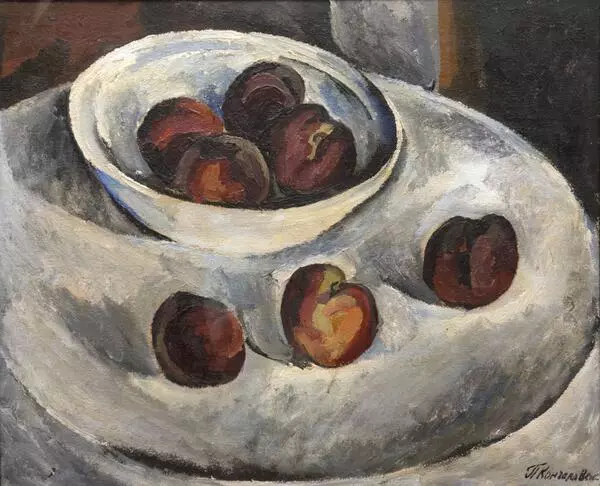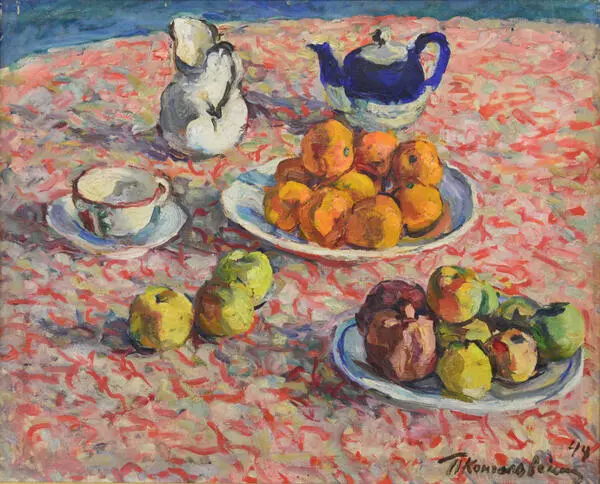Pyotr Konchalovsky is one of the most famous Russian avant-garde artists, a master of portraiture and still life genre, as well as the founder of the famous Mikhalkov-Konchalovsky dynasty. He was born into the family of a writer in the Kharkov governorate. During his childhood, Konchalovsky showed a penchant for painting, but had to follow his parents’ firm recommendation and enter the Faculty of Sciences at Moscow University. Later, he nevertheless decided to pursue a career in art and went to Paris to study at the Académie Julian. After returning to Russia in 1907, Konchalovsky graduated from the Academy of Arts.
In the same year, he went back to France, where he fell under the great influence of the French Post-Impressionist Paul Cézanne. In his search of new forms, the artist addressed the contemporary French painting, and later on became interested in Russian folk art. This fusion of artistic approaches determined the originality of his creative techniques. In 1911, together with other experimental painters, Konchalovsky founded a group of artists called “Jack of Diamonds”, which was the largest avant-garde art association in Russia.
Pyotr Konchalovsky is called the “bogatyr” (hero) of Russian painting. His paintings are full of passion and fiery temperament. The artist’s work is characterized by joyful elation and the vividness of bright colors. When constructing his world, Konchalovsky rendered the volume with color and tried to render the subject in all its dimensions. Thus, in ‘Still Life’, ordinary things from the artist’s own workshop — a box with canvases, an ax, a bucket, and a stove — seem to come to life, to pile up and start moving impatiently.
In his favorite still life genre, the artist depicted the most common things, which acquired a symbolic meaning and became the signs of their time in his paintings. The artist’s counterpart in literature was the like-minded poet Vasily Kamensky. In his poems ‘Ax’, ‘Rivets and Nuts’, ‘Coal’, ‘Railroad ties’ Kamensky celebrated everyday objects. Both masters sought to convey the new aesthetics of the revolutionary time.
After 1917, Konchalovsky became one of the leading artists of the Socialist Realism.
The work entered the Irkutsk Museum in 1928 from the State Museum Fund.
In the same year, he went back to France, where he fell under the great influence of the French Post-Impressionist Paul Cézanne. In his search of new forms, the artist addressed the contemporary French painting, and later on became interested in Russian folk art. This fusion of artistic approaches determined the originality of his creative techniques. In 1911, together with other experimental painters, Konchalovsky founded a group of artists called “Jack of Diamonds”, which was the largest avant-garde art association in Russia.
Pyotr Konchalovsky is called the “bogatyr” (hero) of Russian painting. His paintings are full of passion and fiery temperament. The artist’s work is characterized by joyful elation and the vividness of bright colors. When constructing his world, Konchalovsky rendered the volume with color and tried to render the subject in all its dimensions. Thus, in ‘Still Life’, ordinary things from the artist’s own workshop — a box with canvases, an ax, a bucket, and a stove — seem to come to life, to pile up and start moving impatiently.
In his favorite still life genre, the artist depicted the most common things, which acquired a symbolic meaning and became the signs of their time in his paintings. The artist’s counterpart in literature was the like-minded poet Vasily Kamensky. In his poems ‘Ax’, ‘Rivets and Nuts’, ‘Coal’, ‘Railroad ties’ Kamensky celebrated everyday objects. Both masters sought to convey the new aesthetics of the revolutionary time.
After 1917, Konchalovsky became one of the leading artists of the Socialist Realism.
The work entered the Irkutsk Museum in 1928 from the State Museum Fund.



